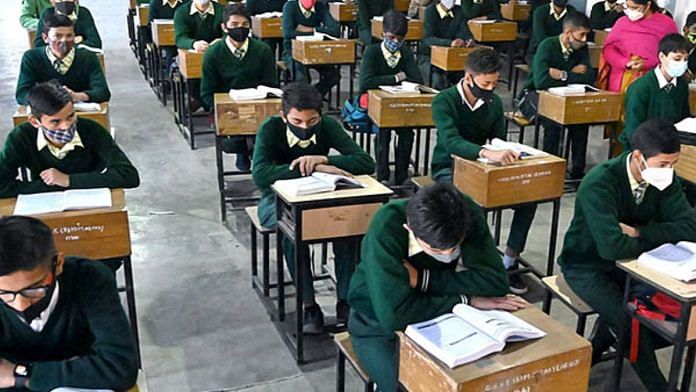A recent comment by well-known historian William Dalrymple in an interview, that the blame for the rise of ‘WhatsApp history’ is to be laid at the door of academic historians, has triggered a public controversy. He has argued that the work done by academic historians has primarily been for each other; they have made no effort to reach out to the wider audience. This, in turn, has led to the void being filled by pseudo-history across social media.
While the debate continues to rage on whether it is justified to pin the entire blame on academic historians, it is important to ask this crucial question:
Why has it been so easy for ‘Whatsapp University’ to spread pseudo-history?
The Whatsapp audience generally wants instant information in bite-sized capsules. It does not have the patience to read or even hear out reasoned arguments. It also wants ‘history’ that will feed its existing biases, and becomes angry and accusatory when faced with research-based counter-arguments. Large sections of this audience believe that history ought to be ‘black and white’ with the battle lines clearly drawn – a narrative of ‘us versus them’ where ‘we’ are the ‘wronged’ and ‘they’ are the ‘enemies’.
Why is this so?
There are several reasons behind this and they have been discussed on public platforms. But one aspect has been largely overlooked: this refers to the way in which history is taught in school, especially at the secondary level, which is the stage where a majority of students ‘drop’ the subject, never to study it again.
History is more than just facts
The history taught at the secondary-school level conveys historical information in chronological order, in an organised manner. The students are expected to learn a great many names, events, and dates. But nowhere is it emphasised sufficiently that history is much more than just a set of facts. At the core of the subject lies the interpretation of facts, the capacity to be open to diverse points of view, and to accept that there may be multiple and even diametrically opposite interpretations.
Students who do take up history at the undergraduate level are often surprised to learn that the same set of facts can give rise to contradictory conclusions. And that these differing interpretations can – and do – coexist within the framework of the discipline. For example, many historians have shown, with evidence, how British colonial policies destroyed India’s indigenous handicrafts and manipulated customs duties to benefit British manufacturers while hurting Indian ones and systematically draining the country of its wealth. But there are plenty of other historians who interpret the same evidence to argue that British colonial rule was mostly good for the subcontinent.
Also read: Who’s responsible for the state of India’s history? Propaganda, profits & influencers
Debates are crucial
Divergent interpretations are fine as long as they are based on verified sources. Debates are the lifeblood of history, after all. It would be difficult to go into the details at the school level but how many secondary school textbooks even mention that the debates exist?
Secondary school students are usually never told that the history that is taught to them is usually the winner’s version, that other versions may exist and that this is nothing new. Across the world, when there is a major ideological shift in political regimes, it has often been observed that school-level history textbooks are among the first to be changed.
After coming to power in Germany in 1933, Adolf Hitler’s Nazi party removed older textbooks from the school curriculum and introduced new ones that revered Hitler, advocated unquestioning obedience to state authority, and upheld anti-semitism, militarism and racism. Similarly, the history of the Indian subcontinent during the early to mid-20th century is likely to be depicted quite differently in Indian and Pakistani textbooks.
Also read: Why is it fashionable to deride historians? The answer lies outside academia
Teaching history in the WhatsApp era
History does not demand uniformity. What is important is whether the version in question is based on evidence unearthed by genuine research and analysed according to accepted methods.
Students today have easy access to knowledge. Many would argue that, instead of only loading them with information, it is important to make them aware of the difference between fact, opinion and interpretation – something that is rarely explained to students at the secondary school level. This can be done using examples they will relate to. This way, when students read a piece of historical writing, they will be able to ask the correct questions—who wrote this and why? What is the evidence for this? Is the assessment just a bunch of subjective judgements or is it backed by proof?
Interestingly, this is a critical part of the skill set needed to identify ‘fake news’, and schools in the West are increasingly prioritising it as a part of their curriculum.
The result of all this not being done is that Indians tend not to question the evidence for or the credibility of any history they ‘consume’. Especially if it fits the narrative of their choice.
This then creates an audience base that is perfect for the pseudo-history circulated on WhatsApp and YouTube.
Dr Krishnokoli Hazra teaches history at the undergraduate level in Kolkata. Views are personal.
This is part of ThePrint opinion series on Indian history in the Whatsapp age. Read all articles here.
(Edited by Zoya Bhatti)







Critical thinking skills are not considered important in arts field and only something used in science field. That is the reason why even techies fall for pseudo history.